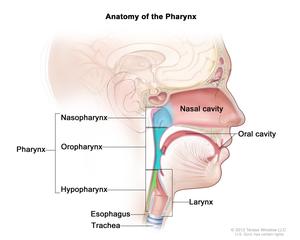RESPIRATORY
SYSTEM
Introduction
The respiratory system is vital in keeping you alive.
It is a complex system that brings needed oxygen into your body and then take
unwanted carbon dioxide out of your body.
Oxygen is the key factor needed for your body cells
for life funciona. All of your cells make use of the oxygen and then give off
waste gas in the form of carbon dioxide.
How the Respiratory System Works?
The respiratory system’s primary function is to breathe in air, absorb oxygen into the bloodstream, and breathe out carbon dioxide.
Air comes into the body through the nose or mouth, and enters the airways. Airways are the tubes that carry air into our lungs. As they branch out, they become smaller and smaller, and eventually connect to small air sacs where fresh oxygen from the air is exchanged for carbon dioxide in the blood. This oxygen is then taken through the blood to the rest of your body, where it is used to produce energy.
Main parts of the Respiratory System and their Function
Nasal cavity: Cleans, warms, and moiistens the air.
Pharynx: Only passageway that air and food travels through at the same time.
Larynx: Also known as the voice box, as air goes through te vocal cords, it makes a vibration, making sounds.
Epiglottis: Flap of tissue that closes the airway from the pharynx when we swallow. This allows foos to move to the esophagus and prevents foos from moving to the lungs.
Trachea: Main airway for air that leads to the chest. It is lines with cartilage to prevent it from collapsing.
Bronchi: A division of the trachea that branches off bronchioles and then the lungs.
Bronchioles: Smaller airways that branch off from the bronchi.
Lungs: Masses of clustered alveoli. They are the two main organs of the respiratory system.
Alveoly: Clusteres of tiny air sacs that make up the lungs.
Diaphragm: A thin muscle that moves up adn down to hepl us breathe. When it moves up, air pressure increases as the chest cavity becomes smaller. Air eventually moves out. The opposite happens when we inhale.
Diseases of the Respiratory System
Diseases of the respiratory system fall into two categories:
- Viruses such as inluenza, bacterial pneumonia and the new enterovirus respiratory virus that has been diagnosed in children.
- Chronic diseases, such as asthma and chronic obstructive pulmonary disease.

























